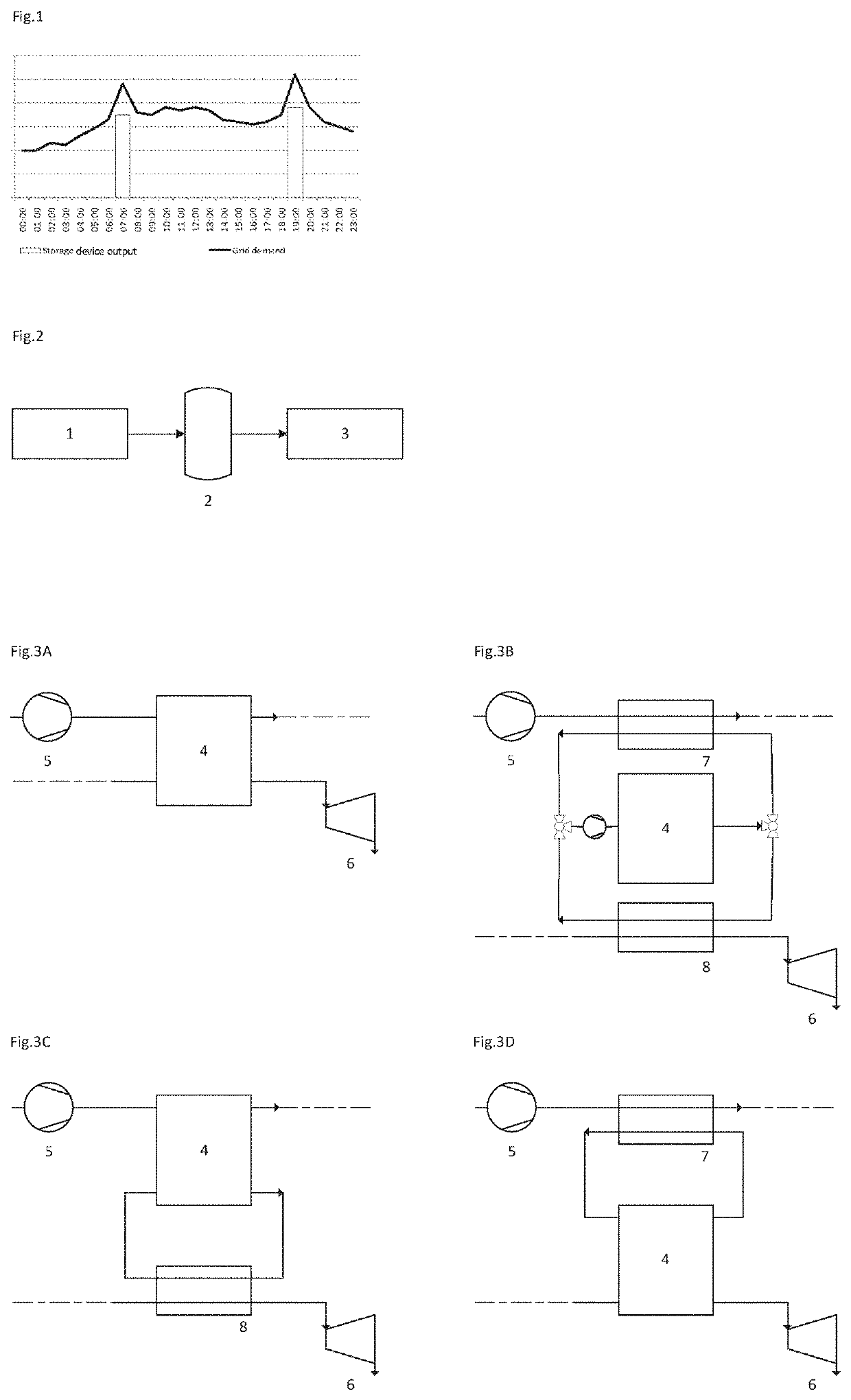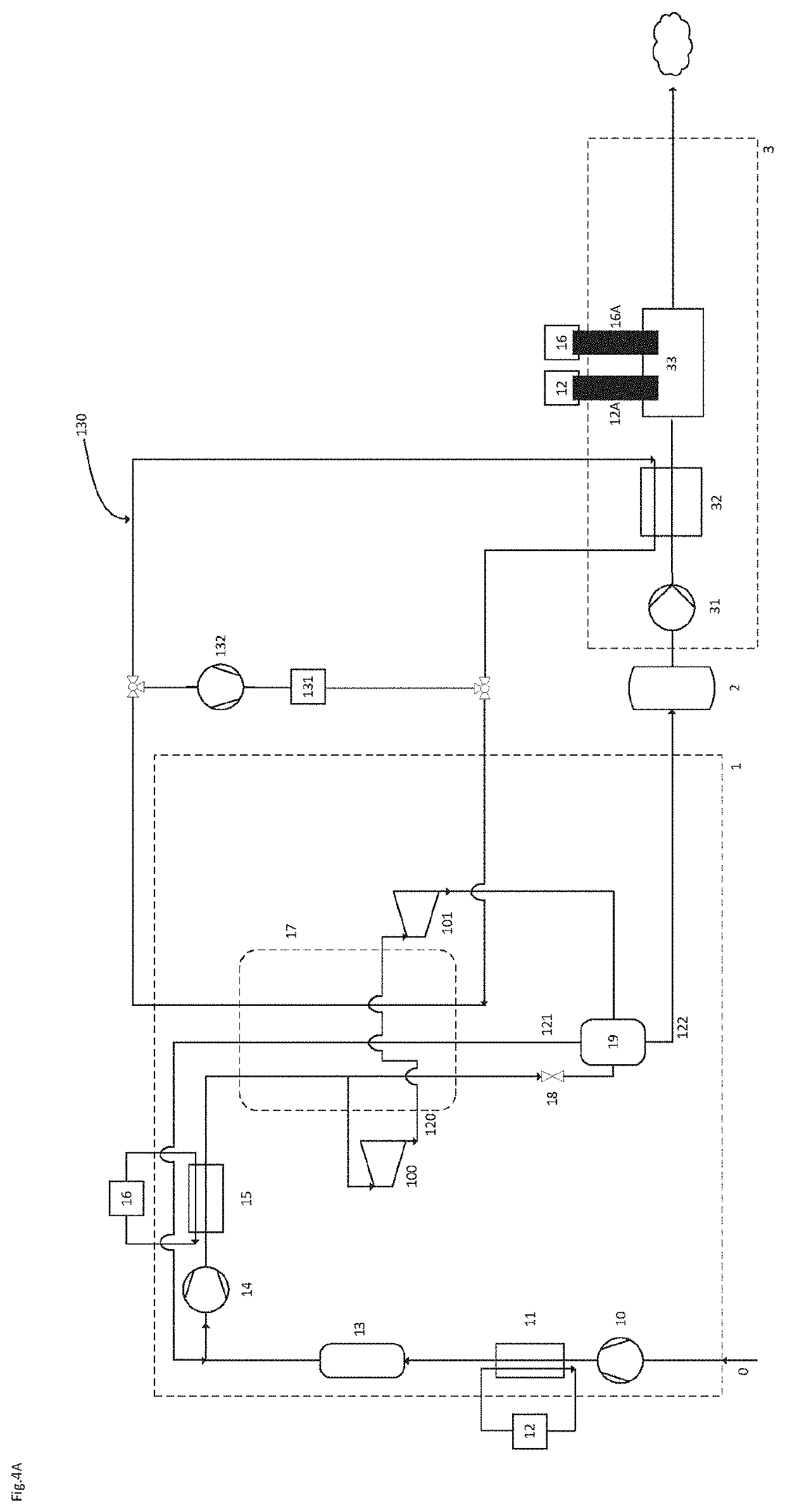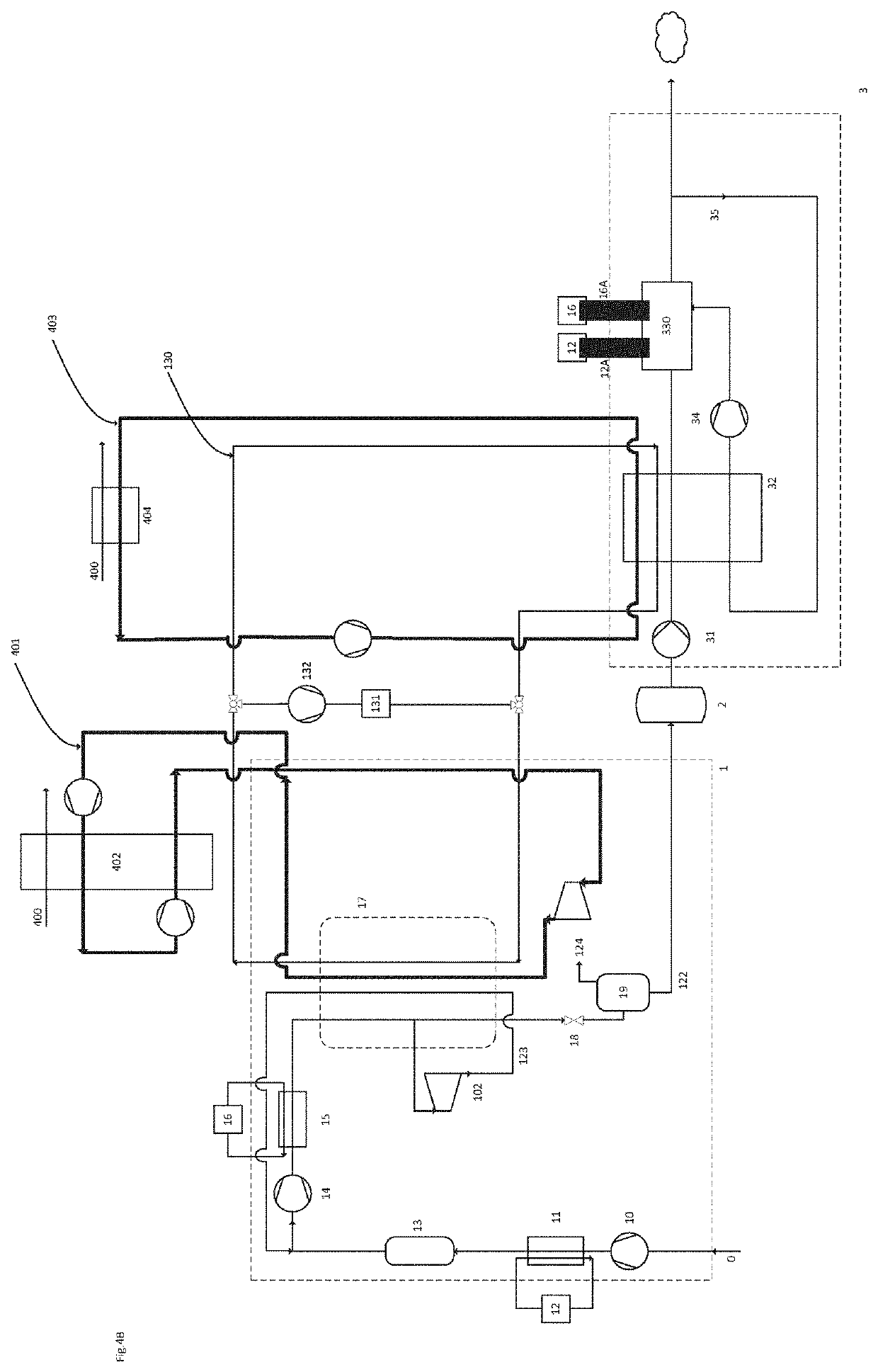Heat-of-compression recycle system, and sub-systems thereof
a recycling system and heat-of-compression technology, applied in steam engine plants, lighting and heating apparatus, ac network load balancing, etc., can solve the problem of requiring more energy input or was
- Summary
- Abstract
- Description
- Claims
- Application Information
AI Technical Summary
Benefits of technology
Problems solved by technology
Method used
Image
Examples
first embodiment
[0200]the invention is depicted in FIG. 4A and is directed to a standalone CES system displaying a liquefaction unit (1), a cryogenic tank (2) and a power recovery unit (3), which exhibits a power island (33) that could adopt any of the configurations depicted in FIG. 5A-5F, each of which is also an embodiment of the present invention. This standalone CES system possesses a heat-of-compression recycle device (11, 12, 15, 16, 12A, 16A) and a first separate closed double loop (130) which transfers the cold thermal energy embedded in the cryogen to the process stream of the liquefaction unit. The hot thermal energy provided to the working fluid of the power recovery unit via at least one power recovery heater may stem from the heat-of-compression recycle device through the second (11, 12, 12A) and third (15, 16, 16A) separate closed double loops. Although it is a standalone system, it is possible to have this embodiment using not only the hot thermal energy provided by the heat-of-comp...
second embodiment
[0220]the invention is depicted in FIG. 4B and is directed to a thermally-integrated system displaying a liquefaction unit (1), a cryogenic tank (2) and a power recovery unit (3) which exhibits a power island (330) that could adopt any of the configurations depicted in FIG. 6A-6F, each of which is also an embodiment of the present invention. This thermally-integrated CES system possesses a heat-of-compression recycle device (11, 12, 15, 16, 12A, 16A) and a first separate closed double loop (130) which transfers the cold thermal energy embedded in the cryogen to the process stream of the liquefaction unit. This CES system receives some waste cold thermal energy from a LNG regasification terminal external to and co-located with said CES system via a first (401) and a second (403) separate closed single loops. The waste cold thermal energy provided by the LNG regasification terminal does not fulfil entirely the needs of the liquefaction unit, which still requires the presence of the fi...
PUM
 Login to View More
Login to View More Abstract
Description
Claims
Application Information
 Login to View More
Login to View More - R&D
- Intellectual Property
- Life Sciences
- Materials
- Tech Scout
- Unparalleled Data Quality
- Higher Quality Content
- 60% Fewer Hallucinations
Browse by: Latest US Patents, China's latest patents, Technical Efficacy Thesaurus, Application Domain, Technology Topic, Popular Technical Reports.
© 2025 PatSnap. All rights reserved.Legal|Privacy policy|Modern Slavery Act Transparency Statement|Sitemap|About US| Contact US: help@patsnap.com



